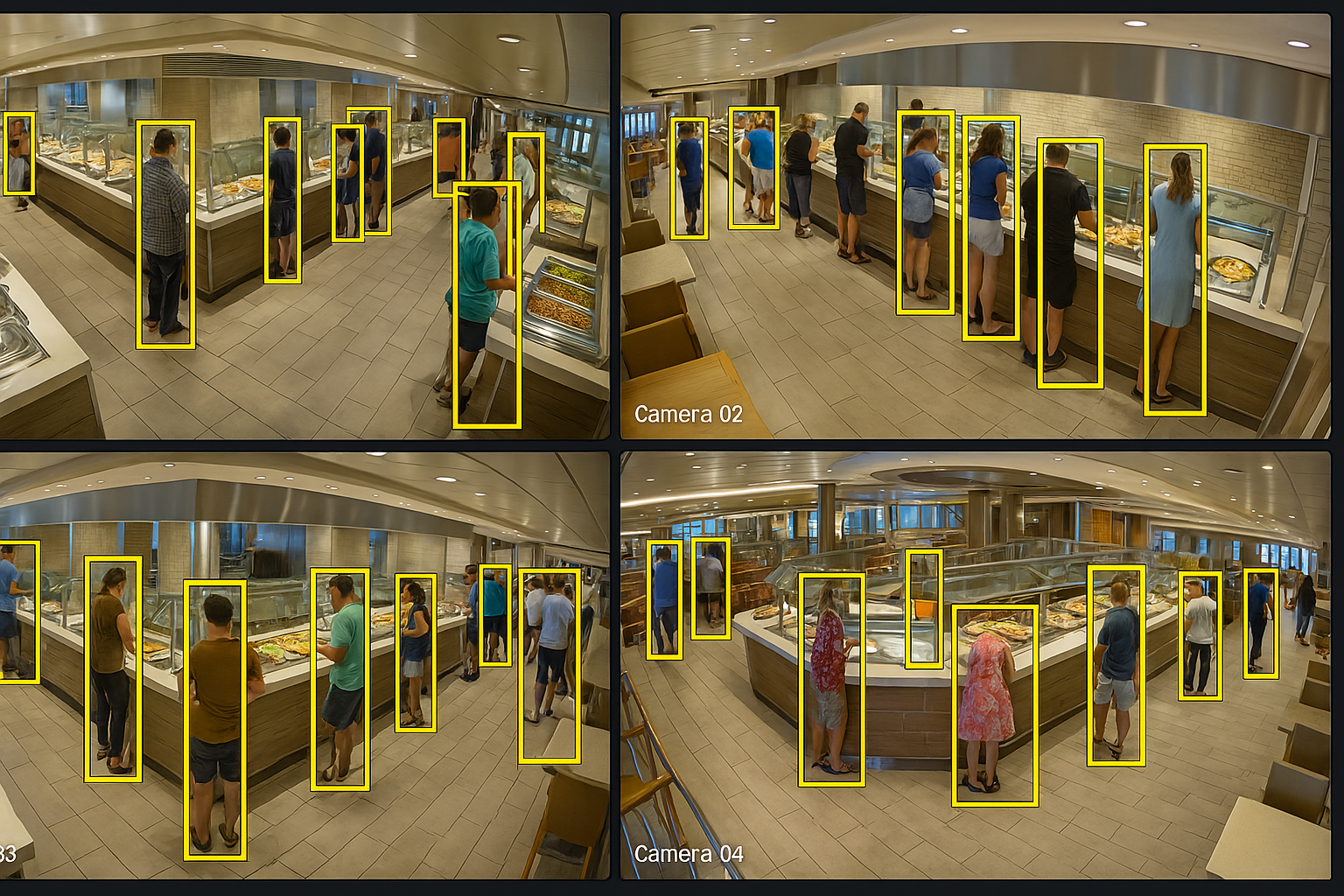Computer Vision People Counting for Cruise Environments

Objective
Develop a privacy-focused computer vision system for real-time occupancy monitoring in cruise ship environments, providing accurate headcounts without using facial recognition technology.
Challenges
Complex lighting conditions in maritime environments, need to handle fisheye camera distortion, strict privacy requirements prohibiting facial recognition, and requirement for fully offline processing due to limited connectivity at sea.
Solution:
- A head-counting model was developed to avoid facial recognition, minimizing complexity and privacy concerns
- The team labeled ~10,000 images across three datasets, specifically tailored for fisheye security cameras with edge distortion
- A custom Computer Vision model was built to perform robust counting under these conditions, using existing onboard infrastructure
- Partnered with Lambda Labs to deploy a 1U rack-mounted GPU server, allowing all inference to be done locally without the cloud
- Integrated real-time density metrics into Royal Caribbean's operational systems to support passenger flow and staff planning
Outcome:
Over ~3 months, the project delivered a full PoC-to-MVP deployment aboard a live ship. It included hardware setup, live video integration, testing at sea, and successful system integration. The project concluded with a full handoff to Royal Caribbean's internal engineering team, who began expanding the solution to additional ship zones and vessels.
Key Benefits:
- Delivered real-time occupancy visibility without facial recognition
- Utilized existing security camera systems—no hardware upgrades needed
- Designed for fully offline inference in maritime environments
